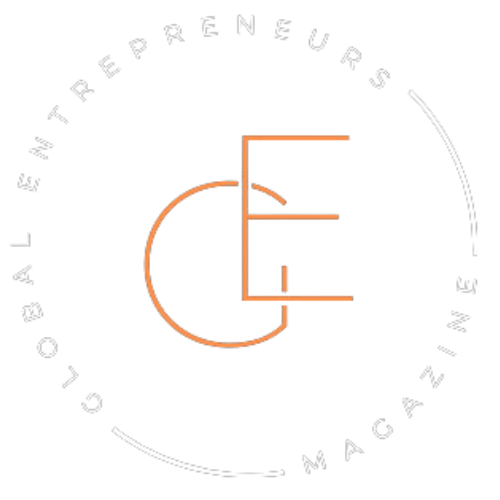She didn’t wear a power suit. She wasn’t born into a legacy of leaders. And when she walked into that boardroom, there were no familiar faces waiting for her.
The door didn’t swing open. She had to push — gently at first, then with her whole weight.
People told her she was ambitious like it was a warning. They handed her compliments wrapped in doubt. “You’re impressive… for someone so young.” “So articulate.” “You don’t look like the typical founder.”
Still, she stayed. She stayed when no one saved her a seat. She stayed when her ideas were ignored, then repeated louder by someone else. She stayed long enough to make room for another woman to walk in after her — and notice she wasn’t alone.
This story isn’t rare anymore. That’s the point.
All across industries, women are turning locked doors into open hallways. Some kicked them down. Others found hidden keys. And many are quietly making sure the next generation doesn’t have to knock so hard.
The old guard: gatekeeping dressed as tradition
Ask any woman who’s made it to the top of a legacy institution, and she’ll probably have a story about learning the rules that no one wrote down.
Don’t speak too early in the meeting. Don’t dress too bold. Don’t ask for too much, too soon. Stay competent, but not threatening. Confident, but not too loud.
These weren’t formal policies. They were passed down like survival skills — quiet instructions from those who came before, often shared in hushed tones over coffee or in the hallway after a meeting. In some cases, the women already inside had to become gatekeepers themselves just to hold on to their place. If the room only had one seat for a woman, protecting that seat sometimes meant keeping others out.
It’s easy to judge that now. But for many, it wasn’t about selfishness. It was survival. When scarcity defines the system, scarcity shapes the mindset.
Still, that mindset came at a cost.
Whole generations of women grew up believing success meant fitting into spaces that were never designed with them in mind. They learned to blend in, not stand out. To prove they could thrive in a structure that never invited their voice to begin with.
And yet — some of those same women, even after years of navigating systems that trained them to close ranks, are now the ones holding the door open. Because surviving a broken system can do one of two things: it can harden you, or it can wake you up.
The shift: why trailblazing feels different today
It used to be about being the only one. Now it’s about making sure you’re not the last.
Women today aren’t just chasing seats at the table. They’re redesigning the whole layout — creating new tables, pulling in new voices, and questioning why the table was shaped that way in the first place.
There’s less interest in fitting in and more energy behind building something better. You see it in how leaders talk about mentorship — not as a checkbox, but as a responsibility. You see it in the way founders fund other women’s ideas, even when investors hesitate. And you see it in the communities that form not out of competition, but out of care.
Trailblazing looks different now because it’s rooted in access, not approval. It’s not about being the exception. It’s about refusing to be alone.
The shift isn’t loud. It’s steady. And it’s coming from women who know exactly what it felt like to be left out — and who decided that ends with them.
Creating new paths: stories that redefine access

She was once the intern no one remembered. Now she runs her own creative agency — and every summer, she brings in young women who remind her of herself. First-gen. Scrappy. Loud with ideas, quiet in meetings. She doesn’t just offer a desk. She teaches them how to be heard.
Another woman, once passed over for promotions because she didn’t “look like leadership,” now funds startups in cities that big investors tend to skip. She doesn’t need to sit on panels or trend on LinkedIn. Her power is quiet, strategic — and deeply intentional.
Then there’s the editor who carved her way through a male-dominated newsroom. She remembers the subtle digs, the unequal pay, the hours of trying to prove what should’ve been obvious. Today, she makes room for new voices that write from places she never got to stand in. And she fights for them — not because she needs to, but because she can.
These aren’t feel-good stories. They’re blueprints. They show what access actually looks like when someone decides to stop climbing and start building.
Not everyone wants to be a trailblazer. But for the ones who are — it’s rarely about spotlight. It’s about memory. Remembering how hard it was. And making sure someone else doesn’t have to carry that same weight.
What access really looks like
Access isn’t a hashtag. It’s not a scholarship fund that gets announced once and quietly disappears. It’s not a mentorship program where the only advice is “work harder” and “be patient.” Real access shows up in the messier places — in hiring decisions, in who gets feedback instead of silence, in who’s allowed to fail without being written off.
It looks like a woman pulling someone aside after a tough meeting and saying, “You were right. Say it again, louder.”
It looks like referrals that aren’t reserved for old boys’ networks. It looks like pushing back when someone says, “She’s not quite ready,” and asking, “Ready for what?”
Access costs something. It takes time to mentor when your own calendar is overflowing. It takes risk to vouch for someone who doesn’t check every traditional box. It takes emotional energy to believe in someone before they believe in themselves.
But the women who do it — they understand what it means to carry that kind of power. They don’t hoard it. They pass it on.
And they don’t always have a title for it. Some don’t even realize they’re trailblazing. They’re just doing what no one did for them.
The next generation is watching
She’s nineteen, running a small online brand from her bedroom, learning as she goes. She doesn’t ask for permission to lead — she just does it. And when she posts about her work, she tags the women who inspired her. Women she’s never met, but who made her believe it was possible.
Another just landed her first job in tech. She doesn’t see herself as a “first” or “only.” She sees a future — one where she builds products that solve real problems for people who look like her. She walks into meetings expecting to be heard, because someone before her fought to be.
This generation grew up seeing women take up space. Not apologizing for it. Not shrinking to fit expectations. They’re bold in ways that feel almost radical to those who came before — because they didn’t inherit the same silence.
Still, confidence doesn’t happen in a vacuum. Visibility made it possible. Access made it real.
And even though they’re paving their own way, they know who left the breadcrumbs.
Keep the door unlocked
She doesn’t call herself a mentor. She’s too busy answering late-night texts from a former intern who just got promoted, reviewing resumes between flights, reminding the next one in line that no — she’s not asking for too much.
The woman from the beginning? She’s still pushing doors open. But now, she walks a little slower. Makes sure someone’s behind her. Points out the doors she missed. Shares the shortcuts she had to learn the hard way.
This isn’t about legacy. It’s about responsibility. Once you’ve made it through, you don’t forget how heavy that door was.
So you hold it.
You prop it open.
You tell the next one where to find it — and how to kick if it sticks.
Because access doesn’t end with you. It begins again, every time you decide not to walk through alone.




